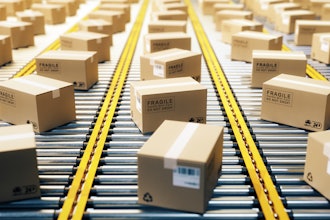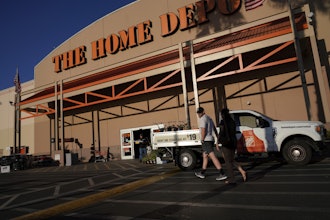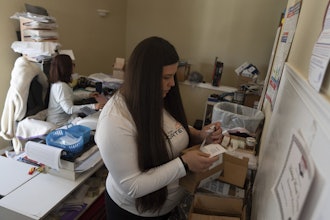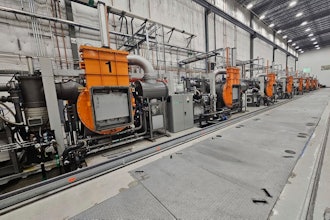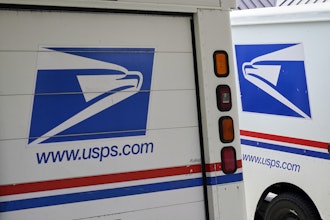
In 2021, businesses across the supply chain learned the hard way that the customer experience is king. Now, in a time when orders arriving on time is no guarantee, transparency must go farther than it has in the past.
Said bluntly, customers don’t care what happens behind the scenes, they just expect their products to be available or delivered.
It’s true that the global networks companies rely on to source and sell goods don’t always run like clockwork. But by any measure, supply chain woes only continue to be a challenge.
The National Retail Federation warned the White House about the congestion and disruptions as early as June 2021. And today, frustrations are reaching a boiling point as the challenges of 2021 foreshadow the trends of 2022 and beyond.
So, what’s next for companies that are grappling with empty warehouses, bare shelves and unhappy customers? Facing the truth: Even though there’s no one company or person that can clear jam-packed ports, companies do have the power to make things better. And it starts with transparency and proactive service.
Even though there’s no one company or person that can solve global macroeconomic challenges, companies do have the power to make things better. And it starts with transparency and proactive service.
Relationships are your number one priority
Low inventory, delayed shipments and higher prices are making it hard for companies to deliver an excellent end-to-end customer experience. But for those companies that embrace proactive, transparent service, customers will feel at least connected to the process, mitigating disappointing news while opening up new opportunities for engagement.
With businesses more likely than consumers to say the experience a company provides is more important than its products or services, communicating timely and relevant data is crucial.
Retailers, for their part, are already good at keeping open lines of communication. During the pandemic’s lockdowns, their digital channels observed double-digit adoption gains.
Service professionals noticed the change, too: The same survey found that 87% reported an uptick in the number of customers reaching out over app or online chat.
At the same time, food delivery apps such as Uber Eats and DoorDash see the upside in transparency in service and customer experience. Recently apps have introduced delivery tracking updates that communicate the status of each order and include a visualization of the delivery to the customer’s door.
This proactive communication sets expectations and eases user frustration over longer wait times.
Why should CG companies take a page from the retailer’s or delivery app playbooks? Consider this scenario: You’re a retailer that’s placed a large order for coffeemakers.
A few days before the scheduled delivery, you get a text from the distributor. The bad news is the shipment is delayed. The good news is the distributor gave you a new guaranteed delivery date, which you share with your customers.
Is this a perfect experience? No. But at least your customers don’t have to sit around wondering where their coffee makers are.
Now compare that less-than-ideal situation to an even worse customer experience: Instead of getting the heads-up about the delay, the coffeemakers never arrive. Days go by with no word from your distributor. And one by one, your customers cancel their orders.
The problem is that many B2B companies employ a stale model. Prior to the pandemic, face-to face collaboration was the norm. That’s why stay-at-home orders pushed digital transformation higher on the priority list. But given the ongoing supply chain issues, businesses may tend to delay their digital transformation plans.
Deprioritizing these improvements and delaying further digital transformation is shortsighted for a couple of reasons.
First, when your customers know your products will be delivered late, you’ll give them more time to adjust their plans. Second, skyrocketing shipping prices mean you probably paid more for the goods sitting on your shelves.
Giving partners transparent access to your inventory portal increases the chances you’ll offload those products (and their related liabilities) first.
Selling in-stock goods helps your bottom line, but it might not be enough to keep your customers happy. In fact, 66% of business buyers expect companies to suggest solutions rather than only selling products.
To do that successfully, you must help them make profitable decisions. That builds trust because it reinforces your reputation as a good partner.
Data transparency enables agility and a better CX
Connecting data silos helps companies deliver on this expectation. Why? Data transparency shines a light on hidden back-office data like inventory. That enables agility up and down the value chain.
Here’s how: Suppliers can communicate in-stock components for manufacturers in real time.
Manufacturers can view available inventory and make faster decisions about what they should build next. And consumer goods companies and retailers can partner with manufacturing and logistics to make smarter decisions about where they should hold and distribute goods.
Let’s go back to our coffeemaker example to see this in action.
Imagine the manufacturer notified the retailer about a similar model available for immediate delivery. They even offered a rebate to enhance the deal.
Given the choice between empty shelves and a relevant alternative, it’s likely that the retailer would embrace the new opportunity. Earning customer satisfaction is the key, after all.
It also gives the customer a sense of control, which is important in this would-be vulnerable moment. Getting accurate data to the right audience at the right time is a clear win-win.
With a modern platform of engagement, companies can connect supplier data with in-stock inventory, customer profiles and delivery partners. That enables companies to set expectations and control the customer experience.
Transparency is always the winning strategy
Companies can control the customer experience and make a bad situation better by leveraging the right technology even in today’s challenging environment.
Studies show that proactive communications increase customer loyalty. Psychologically, it also communicates care, builds brand credibility, personalizes engagement and reduces customer frustration.
But how do you get data out of your enterprise resource system and into the right audience’s hands? By linking inventory, sales, service and customers with modern communication tools.
With data transparency and proactive communication, your customers will stay loyal. Even when you’re still waiting for your ship to come in.
---
Brian Solis is a world-renowned digital anthropologist and futurist who serves as Global Innovation Evangelist at Salesforce.










